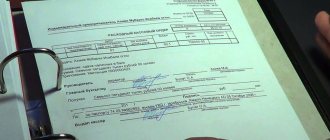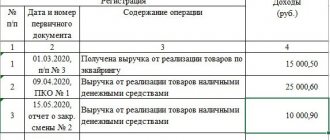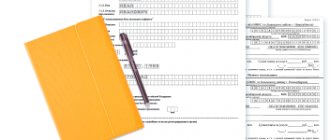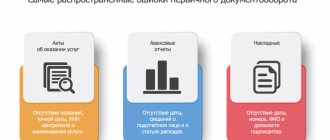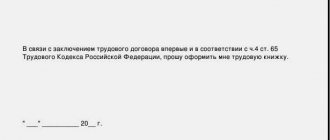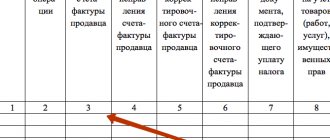Introductory information
The regulatory legal act that regulates cash management is Bank of Russia Directive No. 3210-U dated March 11, 2014 “On the procedure for conducting cash transactions by legal entities and the simplified procedure for conducting cash transactions by individual entrepreneurs and small businesses.” This document was amended by Directive of the Central Bank of Russia dated June 19, 2017 No. 4416-U. The changes will take effect 10 days after publication (the document was published on August 8). Consequently, the procedure for conducting cash transactions changes from August 19, 2021.
Why were the changes needed?
But why was it necessary to adjust the regulations on the procedure for conducting cash transactions? We can find the main answer in the explanatory note to the draft amendments being commented on:
What follows from the explanatory note
The development of the project is due to the introduction of online cash register equipment (online cash registers) from July 1, 2021, which ensures the storage of fiscal data in fiscal drives. See “Online ticket offices from July 1, 2021.”
The draft amendments clarify the procedure for issuing incoming cash order 0310001, and also provide for issuing outgoing cash order 0310002 for the total amount of accepted and issued cash when legal entities and individual entrepreneurs use cash register equipment.
Thus, the receipt and expenditure of funds will be verified with the data transmitted to the Federal Tax Service online.
The procedure for registering cash documents in electronic form is also being clarified and certain provisions of Directive No. 3210-U are being updated. We will tell you in more detail about the most significant adjustments to cash discipline from August 19, 2021.
Unified forms for cash transactions
As before, cash transactions in 2021 are formalized using mandatory unified forms of primary accounting documents. These are forms approved by Decree of the State Statistics Committee of the Russian Federation dated August 18, 1998 No. 88: incoming cash order (abbr. PKO, code OKUD 0310001), outgoing cash order (abbr. RKO, code OKUD 0310002), cash book (code OKUD 0310004). When issuing wages from the cash register, a payroll (OKUD code 0301011) or a payroll slip (OKUD code 0301009), approved. Resolution of the State Statistics Committee of the Russian Federation dated January 5, 2004 No. 1.
IMPORTANT!
By letter dated July 21, 2017 No. 03-01-15/46715, the Ministry of Finance of the Russian Federation confirmed that the use of unified forms related to the maintenance of cash registers (Resolution of the State Statistics Committee of Russia dated December 25, 1998 No. 132) in accordance with the “Standard Rules for the Operation of Cash Registers... "(RF Ministry of Finance dated August 30, 1993 No. 104), optional!
In particular, the rules for conducting cash transactions in 2021 recognize the following forms as optional:
- cashier-operator's journal;
- certificate of payment from the cashier-operator;
- a log of recording the readings of summing cash and control counters of cash register machines operating without a cashier-operator;
- information about the meter readings of cash register machines and the organization’s revenue;
- act on the transfer of summing cash counters to zeros and registration of control counters of the cash register;
- an act on taking readings from control and summing cash counters when handing over (sending) a cash register for repair and when returning it to the organization;
- an act of returning money to buyers (clients) for unused cash receipts (including erroneously punched cash receipts);
- log of calls to technical specialists and registration of work performed;
- act on checking cash in the cash register.
However, some forms remained mandatory elements of cash flow accounting. Each institution is required to generate mandatory documents when cash flows.
Money can be issued on account without an application
Accountable persons are employees to whom an organization or individual entrepreneur gives money to carry out official assignments and who are required to submit a report on their use.
To receive cash on account, the employee must write an application in any form, in which he must record the required amount and indicate for what purpose it will be spent. This follows from paragraph 6.3 of the Bank of Russia Instructions from the Bank of Russia dated March 11. 2014 No. 3210-U. A familiar application for the withdrawal of money from a cash register may look, for example, like this:
Thanks to the commented changes, from August 19, 2021, 2017, organizations or individual entrepreneurs will have the right to issue money on account based on an internal administrative document. The Central Bank did not provide for its name or form. Therefore, an organization or individual entrepreneur will be able to issue an order, instruction or any other administrative document on the issuance of funds. The form of the administrative document is arbitrary. However, it must contain records of the amount of cash and the period for which cash is issued, the signature of the manager and the date. This is required by clause 6.3 of the Bank of Russia Instructions from the Bank of Russia dated March 11. 2014 No. 3210-U (new edition).
Let's give a possible example of an organization's order to issue money against a report, which the director (or other authorized person) can issue in July 2021.
Please note that after August 19, 2021, it will be possible to work as before and issue reports based on employee applications. The Central Bank leaves this option acceptable. Previously, as we have already said, the statement was mandatory and the only possible option.
From August 19, 2021, upon receiving an application from an employee or an administrative document (for example, an order) to issue money for reporting, the accountant will be required to generate an expense cash order (0310002). An expenditure cash order is issued every time money is issued from the cash register. Draw it up according to form No. KO-2 in one copy (clause 4.1 of Bank of Russia Instructions No. 3210-U dated March 11, 2014). Here is an example of an expenditure and cash order drawn up in July 2017, where the order issued by the director, and not a statement, is recorded as the basis for the issuance of funds.
You can use this sample cash receipt order KO-2 as an example. Based on the generated cash register, the cashier is obliged to issue funds to the employee.
Cash balance limit
The cash balance limit is the most changed section of the order. The new formula for calculating the cash limit is not strictly tied to cash receipts. Now the company can calculate based on cash proceeds or the amount of expenses.
The limit is mandatory, because it sets the amount of funds that are freely stored in the cash register. Companies themselves introduce a certain limit. If this is not done, the cash limit is considered zero and all cash on hand at the end of the day must be deposited into the bank account.
The new regulation precisely regulates the formulas for calculating the limit. The choice of the appropriate one is left to the discretion of the organization. There are only two formulas.
The first is that the calculation is made based on cash proceeds, that is, based on the proceeds that came from goods sold, services provided, or work performed. If a legal entity has separate divisions, then the total cash limit is determined taking into account the limit established for such a division. Thus, there is only one limit at the cash desk of a legal entity, but its value can be distributed among separate divisions.
It should be emphasized that the cash limit at the cash desk of a separate division, as part of a general one, must be established by an administrative document of the enterprise or organization. If a division independently deposits money into an account at a banking institution, then the head office sets a limit for it in the manner prescribed for legal entities. Then they are separate.
The calculation formula is presented as follows: L = V / P × Nc, where
- L – limit in rubles;
- V – volume of revenue in cash;
- P – settlement period, namely the number of working days for which the volume of cash receipts is recorded. The period cannot be more than 92 working days (for legal entities).
- Nc – the period of time between depositing proceeds to the bank: 1-7 working days, but if there is no bank in the place where the company is located, then up to 14 days.
The second formula is that the calculation is based on the volume of funds issued. For those legal entities that have separate divisions, the funds issued by them are taken into account. But this is only if they hand over cash to the main office. If not, then they have their own limit.
The formula has an almost similar form, only one indicator has been changed: L = R / P × Nc, where
R is the amount of cash disbursed, which does not include the amount paid as wages, stipends or other benefits to employees.
Is it possible to exceed the limit? Only on days of payment of salaries, stipends or other social benefits to employees, including the day of receipt of cash from a bank account for these payments. The issuance of funds should not exceed 5 working days. There are no other exceptions and there is a fine for exceeding the limit. Officials will pay 4-5 thousand rubles, the amount for organizations is larger - 40-50 thousand rubles.
Individual entrepreneurs and small businesses have the right not to introduce a cash limit for themselves, which makes life much easier for some, but you can leave it. For example, it is useful for safe storage of funds. The previous limit established earlier can be canceled by issuing an appropriate order.
You can issue money on account if you have a debt
Many people know that it is impossible to give accountable amounts from the cash register to an employee who has not yet accounted for the money previously received. Violation of this restriction may result in a fine of up to 50,000 rubles (Article 15.1 of the Code of Administrative Offenses of the Russian Federation). Let us remind you that this rule does not apply to cases where money is transferred to a card.
However, as of August 19, 2021, the situation changes. From this date, organizations and individual entrepreneurs will be able to issue an employee a new amount for reporting at any time. Even if the previously issued amount was not returned on time. This amendment was included in clause 6.3 of the Bank of Russia Instructions from the Bank of Russia dated 11.03. 2014 No. 3210-U.
Nobody canceled the return period
The period for which cash can be issued on account is not limited by law. If the deadline for the return of accountable amounts is set by the manager, then no later than three working days after its end, the employee must report for the money received (clause 6.3 of the Bank of Russia Directive No. 3210-U dated March 11, 2014). This deadline has not been canceled. However, now, even if the employee has not returned the accountable amounts within the prescribed period, he has the right to receive a new accountable amount of money.
Let us remind you that if an employee does not return the amount of the unspent advance on time, the money can be withheld from the salary. For these purposes, a collection order is issued - no later than one month from the day the period established for the report expires. However, it is possible to recover amounts from an employee if he does not dispute the basis and amount of deductions. Therefore, it is required to obtain the employee’s written consent to deductions. Otherwise, it will be possible to collect the debt only through the court (Articles 137, 248 of the Labor Code of the Russian Federation).
The receipt for the PKO can be sent by email
A cash receipt order is filled out when money is received at the cash desk. It is drawn up in one copy according to form No. KO-1 (clause 4.1 of Bank of Russia Instructions No. 3210-U dated March 11, 2014). The cash receipt order form consists of two parts:
- the cash receipt order itself;
- the tear-off part is a receipt (issued to the person who deposited the money).
If the amount of money indicated in the receipt coincides with the amount deposited, the cashier signs the order. Then he puts a seal or stamp on the receipt for the order (if the organization has a seal) and issues a receipt to the depositor.
As for the changes, the receipt for the electronic cash receipt order from August 19, 2021 can be sent to the depositor’s email. No need to print. Just hand out the receipt from the paper PKO, as before. First, we note that it was required to issue “paper” receipts, even if the RKO was generated in electronic format.
How to sew a book?
Before you start maintaining a cash book, you need to calculate the number of sheets required and print them.
It is not recommended to print pages end to end. It is best to print a few extra pages in case you make mistakes while filling out the book and need to make corrections on new sheets.
Then all pages are numbered. In this case, continuous page numbering is used. The book is laced or stitched using thick threads, then certified with the signatures of the director and chief accountant. It is important that the sheets cannot be removed from the book. To do this, the book is sealed using a wax or mastic seal.
The last sheet indicates the actual number of sheets. In this case, the numbers must be deciphered, that is, written in words. This sheet is also subject to signature by the accountant and director of the enterprise.
There are options when the book is sewn together using threads, and their ends are sealed with paper. In addition, the sheets may stick together. In any case, they must be fastened in such a way that they cannot not only be removed, but also new ones cannot be inserted.
When registering a cash book, no staples or other types of binding are used that cannot guarantee the integrity of the book.
Not only the cashier has the right to maintain a cash book
Record information about cash flows in the cash book using Form No. KO-4. All organizations should do this. Only individual entrepreneurs who keep records of income and expenses or physical indicators in accordance with the Tax Code of the Russian Federation have the right not to create a cash book (clause 1, 4.6 of Directive No. 3210-U).
The cash book is kept by the cashier (clause 4, clause 4.6, clause 4 of Directive N 3210-U). However, from August 19, 2021, the Central Bank allows any employee, not just the cashier, to fill out the cash book. When the amendments come into force, the director will be able to fill out the book, for example (clause 4 of Directive No. 3210-U).
If, from August 19, 2021, the cash book will be maintained not by the cashier, but by another employee, then the corresponding responsibilities should be in his job description.
The cash book can be kept on paper or in electronic form (clause 4.7 of Instructions No. 3210-U).
Read also
29.09.2016
Using cash registers in 2021
Economic entities are implementing online cash registers in stages. In accordance with paragraph 4 of Art. 7 of the Federal Law of 07/03/2016 No. 290, from 02/01/2017 new cash register equipment can only be used through a fiscal data operator.
From 07/01/2017, the obligation to use only the new cash register came into effect, that is, from this date the registration of cash register equipment was stopped in the manner established by the old version of the law dated 05/22/2003 No. 54-FZ (as amended on 03/08/2015). The transition took place in several stages. And now almost all organizations and individual entrepreneurs working with cash must use online cash register systems. In accordance with the rules for conducting cash transactions, in 2021 KKM has the right not to apply to companies operating:
- named in paragraph 2 of Art. 2 54-FZ;
- in remote and hard-to-reach places;
- in the field of religious rites and ceremonies, the sale of religious objects;
- pharmacy organizations in rural areas;
- to provide parking spaces on state-owned land plots;
- paid library services;
- accepting cash for utilities;
- educational services to the population;
- provision of services in the field of physical culture and sports;
- provision of services by cultural and creative centers.
For clarity, we will present the step-by-step procedure for implementing the new edition of Law No. 54-FZ in the form of a block diagram.
Today, there are already more than 100 models of online cash registers, and the existing OFDs ensure the transfer of data from cash registers to the OFD, Federal Tax Service and Unified State Automated Information System. The current register of cash registers can be found on the official website of the Federal Tax Service.
According to Law 54-FZ, the fiscal data operator is obliged to:
- store, process and protect fiscal data from modification, ensuring their confidentiality;
- transfer fiscal data from cash register to the Federal Tax Service;
- send the buyer a check electronically and provide the ability to check the check online.
For each online cash register, the OFD collects and updates a lot of parameters: opening and closing times of the shift, amount of cash, average receipt, etc. This means that any point of sale can now be checked via the Internet in a matter of minutes. In addition, the built-in services of some OFDs allow you not only to store the received data, but also to generate various reports.
After the introduction of online cash registers, all their owners, from August 19, 2017, are required to perform the following actions through their personal account of the cash register equipment (clause 1 of Chapter I of the order of the Federal Tax Service of the Russian Federation dated May 29, 2017 No. ММВ-7-20/):
- respond within three days to requests from the Federal Tax Service received through your personal account;
- report non-use of CC machines or within three days from the date of elimination of identified violations during its use;
- report your agreement or disagreement with the data received from the Federal Tax Service about detected violations within one working day.
The transmitted information must be signed with an enhanced qualified electronic digital signature (EDS). After receiving such a message, the Federal Tax Service must confirm the fact of receipt by placing a receipt in the cash register office. Information and documents can also be transmitted on paper to the tax authorities.
